Cooking a perfect pan-seared sirloin steak is an art that combines precision, patience, and a keen sense of taste. Sirloin steak, known for its tender texture and rich flavor, is a favorite among steak enthusiasts. Whether you’re a seasoned chef or a home cook eager to impress, mastering the technique of pan-searing a sirloin steak can elevate your culinary skills and delight your dinner guests. This comprehensive guide will walk you through every step of the process, from selecting the right steak to serving it with a flourish.
Choosing the Right Sirloin Steak
Before you even think about seasoning or cooking, it’s crucial to start with a quality piece of meat. Here are some tips for selecting the perfect sirloin steak:
-
Grade Matters: In the United States, beef is graded based on quality, with Prime being the highest, followed by Choice, and then Select. For pan-searing, aim for a Choice or Prime grade sirloin steak. These grades offer better marbling, which translates to more flavor and juiciness when cooked.
-
Thickness Counts: A thicker steak (ideally 1.5 to 2 inches) is better suited for pan-searing because it allows for a nice crust to form without overcooking the interior. Thinner steaks can overcook quickly, making them dry and less enjoyable.
-
Freshness is Key: Always buy your steak from a reputable butcher or grocery store with a high turnover rate to ensure freshness. Fresh steaks have a bright red color and a slightly tacky surface. Avoid steaks that look dull or have a slimy texture.
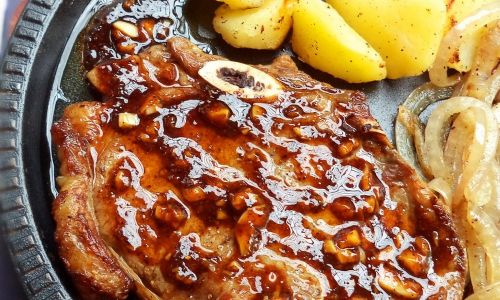
-
Marbling Matters: Look for steaks with even marbling. Marbling is the fat within the muscle that melts during cooking, adding flavor and moisture to the steak.
Preparing the Steak
Once you’ve selected your sirloin steak, it’s time to prepare it for cooking. Here’s how:
-
Trimming the Fat: While some fat is desirable for flavor, trim any excess fat from the edges of the steak. This will prevent the steak from curling during cooking and ensure a more even sear.
-
Room Temperature: Take the steak out of the refrigerator at least 30 minutes before cooking. Allowing it to come to room temperature helps ensure even cooking and a more tender result.
-
Seasoning: Season the steak generously with coarse sea salt and freshly ground black pepper. You can also add other spices or herbs like garlic powder, rosemary, or thyme if you prefer. Pat the seasoning onto the steak using your hands to ensure it adheres well.
-
Oiling the Steak: Rub a small amount of high-heat oil (such as avocado oil, grapeseed oil, or clarified butter) onto the steak. This will help create a beautiful crust when it comes in contact with the hot pan.
Preparing Your Pan and Cooking Equipment
The right tools make all the difference when it comes to pan-searing a steak. Here’s what you’ll need:
-
Heavy-Bottomed Pan: A cast-iron skillet or stainless steel pan with a thick bottom is ideal. These pans retain heat well and distribute it evenly, which is crucial for creating a perfect sear.
-
High-Heat Oil: Use an oil with a high smoke point, such as avocado oil, grapeseed oil, or peanut oil. Olive oil, while delicious, has a lower smoke point and may not be suitable for high-heat cooking.
-
Tongs and Spatula: Tongs are essential for flipping the steak without piercing it, which can release juices and dry out the meat. A spatula is useful for removing the steak from the pan once it’s cooked.
-
Oven Mitts: Protect your hands with oven mitts or towels when handling hot pans and tools.
-
Thermometer: An instant-read meat thermometer is invaluable for checking the internal temperature of the steak to ensure it’s cooked to your preferred doneness.
Preheating the Pan
Preheating your pan is crucial for achieving a beautiful sear on your steak. Here’s how to do it:
-
Preheat the Oven: If you plan to finish cooking the steak in the oven, preheat it to 350°F (175°C). This will help ensure the steak cooks evenly through to your desired doneness.
-
Heat the Pan: Place your heavy-bottomed pan over high heat on the stovetop. Add a couple of tablespoons of high-heat oil and let it heat up until it’s shimmering and almost smoking. This should take about 3-5 minutes.
Searing the Steak
Now it’s time to sear your sirloin steak. Here’s the step-by-step process:
-
Place the Steak: Carefully place the steak in the hot pan. It should sizzle immediately, indicating that the pan is hot enough. If the oil splatters excessively, reduce the heat slightly.

-
Sear Each Side: Let the steak cook undisturbed for about 3-4 minutes on the first side. This will allow a nice crust to form. Use tongs to flip the steak and sear the other side for another 3-4 minutes.
-
Edge Sear (Optional): For an even more finished look, you can sear the edges of the steak as well. This is particularly useful if you’re aiming for a restaurant-quality presentation.
Finishing the Steak
After searing, you have a few options for finishing the steak:
-
Finish in the Oven: Transfer the pan to the preheated oven and cook the steak to your desired doneness. Use an instant-read thermometer to check the internal temperature:
- Rare: 120-125°F (49-52°C)
- Medium-Rare: 130-135°F (54-57°C)
- Medium: 140-145°F (60-63°C)
- Medium-Well: 150-155°F (66-68°C)
- Well-Done: 160°F (71°C) and above (Note: Cooking a steak to well-done will result in a drier, less tender piece of meat)
-
Finish on the Stovetop: If you prefer, you can finish cooking the steak entirely on the stovetop. Reduce the heat to medium-low after searing and continue cooking, flipping the steak occasionally, until it reaches your desired doneness. This method requires closer monitoring to prevent overcooking.
Resting the Steak
Once the steak has reached your desired internal temperature, transfer it to a plate or cutting board and let it rest for at least 5-10 minutes. This resting period is crucial for allowing the juices to redistribute within the meat, ensuring a juicy, tender result when you slice it.
- Tenting with Foil: To keep the steak warm while it rests, loosely cover it with aluminum foil. Be careful not to tightly wrap it, as this can cause the steak to steam and lose its crisp crust.
Serving the Steak
Now it’s time to serve your perfectly pan-seared sirloin steak. Here are some tips for presentation and accompaniment:
-
Slicing: Use a sharp knife to slice the steak against the grain. This will make the meat easier to chew and enhance its tenderness.
-
Sauces and Garnishes: Serve your steak with your favorite sauces, such as a red wine reduction, bearnaise sauce, or a simple compound butter. Garnish with fresh herbs like parsley, thyme, or rosemary for an added touch of elegance.
-
Side Dishes: Pair your steak with complementary side dishes like roasted vegetables, garlic mashed potatoes, or a crisp green salad.
Troubleshooting and Tips
Even the best cooks encounter issues sometimes. Here are some troubleshooting tips to help you perfect your pan-seared sirloin steak:
-
Steak is Overcooked: If your steak is overcooked, it may be due to an overly hot pan or not resting properly. Adjust the heat and ensure you let the steak rest for the recommended time.
-
Steak is Undercooked: Use an instant-read thermometer to accurately check the internal temperature. If the steak is still too rare after resting, you can return it to the pan or oven for a brief additional cook time.
-
Steak Sticks to the Pan: Make sure your pan is hot enough before adding the steak. A well-heated pan will create a sear that helps release the steak from the surface. Also, avoid overcrowding the pan, which can lower the temperature and cause sticking.
-
Uneven Cooking: For even cooking, use a thick steak and flip it only once during searing. If you’re finishing in the oven, use an oven-safe pan to avoid transferring the steak, which can disrupt the sear.
Conclusion
Cooking a perfect pan-seared sirloin steak is a rewarding culinary endeavor that combines skill, patience
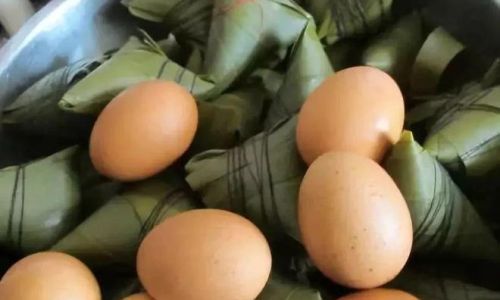
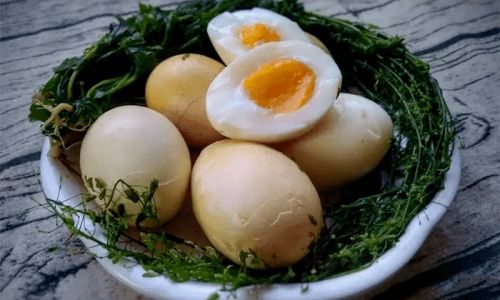
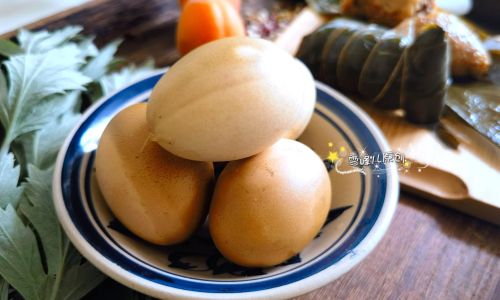
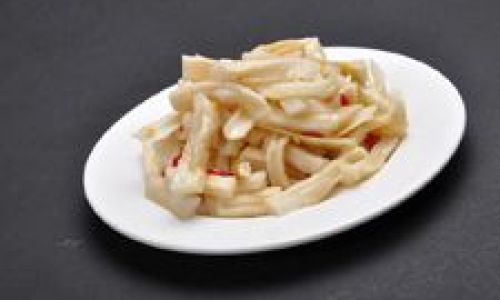

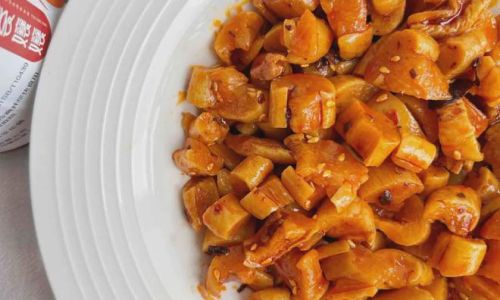
0 comments